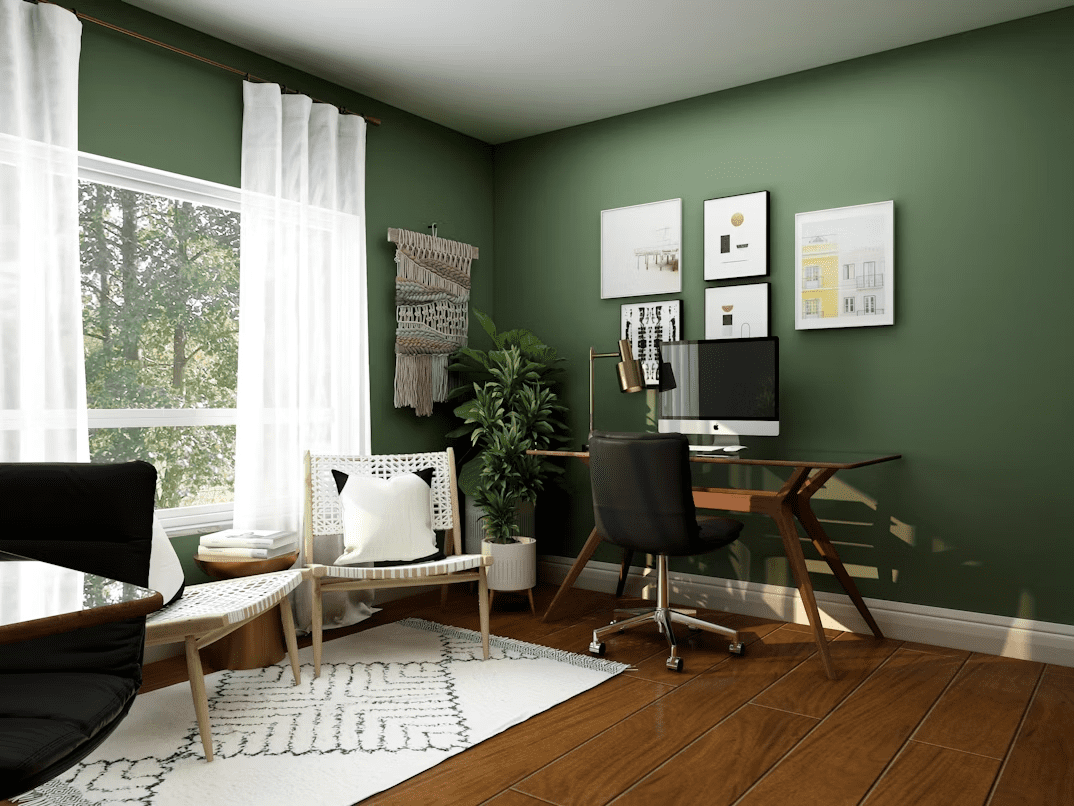Working from home provides flexibility and comfort that traditional office settings cannot match. Many professionals thrive in this environment when they build the right structure and adopt smart strategies. Without clear systems in place, though, distractions, fatigue, and disorganization can creep in. Establishing good habits, designing a supportive space, and setting personal boundaries make remote work more efficient and sustainable. A thoughtful approach helps maintain productivity while preserving work-life balance.
Design a Functional Workspace
A well-organized workspace sets the tone for focused work. Many remote workers choose to convert a spare room, a quiet corner, or even a closet into a compact home office. Exploring creative cloffice ideas can help maximize small spaces while keeping everything functional and organized. Thoughtful workspace design encourages focus, minimizes distractions, and gives work a physical boundary within the home. A clear division between personal and professional spaces allows the mind to switch gears more effectively.
Simple touches like ergonomic chairs, good lighting, and organized shelving make a significant difference. A clutter-free desk improves mental clarity, while proper cable management reduces visual chaos. Adding plants or calming decor elements enhances the atmosphere, creating a space that feels both productive and pleasant.
Establish a Consistent Routine
A daily routine keeps workdays structured and prevents time from slipping away. Setting clear start and end times mirrors traditional office environments and encourages discipline. Getting ready in the morning, even without commuting, signals to the brain that it is time to shift into work mode. Wearing comfortable but presentable clothing reinforces this mindset.
Scheduling regular breaks throughout the day boosts energy and focus. Short walks, stretches, or quick mindfulness exercises give the mind a reset between tasks. Consistent routines make remote work more sustainable and reduce feelings of aimlessness or burnout.
Minimize Distractions Strategically
Home environments often present unique distractions, from household chores to streaming services. Identifying these distractions early allows for strategic management. Turning off non-work notifications, setting boundaries with housemates or family members, and designating specific times for personal tasks help keep work hours focused.
Noise-canceling headphones, door signs, or visual cues indicate when deep work sessions happen. Allocating separate blocks for focused work, meetings, and communication creates a rhythm that minimizes interruptions and improves task completion rates.
Leverage Technology for Organization
Digital tools streamline workflows and help maintain productivity. Project management platforms, digital calendars, and task-tracking apps keep work organized and accessible. Setting reminders and notifications for deadlines ensures that nothing falls through the cracks.
Cloud storage platforms enable secure file sharing and make collaboration seamless across teams. Using communication tools effectively, such as muting channels when focusing or setting status indicators, reduces unnecessary disruptions. Thoughtful technology use supports both accountability and efficiency.
Prioritize Clear Communication
Strong communication keeps remote teams aligned and engaged. Setting regular check-ins with colleagues or supervisors maintains connection and accountability. Clear expectations regarding deadlines, project updates, and availability prevent misunderstandings.
Written communication takes on greater importance in remote environments. Using concise and well-structured messages reduces confusion and saves time. Regular video meetings create opportunities for face-to-face interaction, strengthening team relationships and reducing feelings of isolation.
Set Realistic Goals and Boundaries
Working from home can blur the line between personal and professional life. Setting realistic daily goals ensures progress without creating unrealistic pressure. Breaking larger projects into smaller, achievable tasks keeps motivation high and provides a sense of accomplishment.
Establishing clear boundaries between work and personal time protects mental well-being. Turning off work notifications after hours, closing the laptop at a set time, and engaging in non-work activities signal the end of the workday. These habits prevent burnout and promote a healthy work-life balance.
Make Use of Natural Light and Fresh Air
Natural light improves mood, focus, and energy levels. Positioning workspaces near windows provides better illumination and a sense of openness. Fresh air through open windows or short outdoor breaks recharges the mind and reduces fatigue.
Regular exposure to daylight supports circadian rhythms, making it easier to maintain consistent sleep patterns. A well-ventilated, well-lit workspace creates a healthier environment that supports long periods of concentration.
Keep a Clean and Organized Environment
Clutter drains mental energy and makes it harder to concentrate. Dedicating time each day to tidying the workspace maintains order and creates a more inviting atmosphere. Filing documents, organizing supplies, and wiping down surfaces keep the area fresh and ready for focused work.
Maintaining an organized digital environment matters too. Regularly archiving files, clearing desktops, and keeping email inboxes under control prevents digital clutter from becoming a distraction.
Schedule Movement and Self-Care
Working remotely often leads to long periods of sitting, which can affect physical and mental health. Scheduling movement throughout the day supports focus and reduces fatigue. Simple stretches, short walks, or home workouts break up sedentary time and improve circulation.
Self-care activities such as healthy meals, hydration, and mindfulness practices boost energy levels. Treating physical and mental well-being as priorities sustains productivity over the long term. A balanced approach prevents burnout and maintains consistent performance.
Foster a Sense of Connection
Remote work can feel isolating without intentional efforts to connect with others. Regular team meetings, casual virtual coffee breaks, or collaborative sessions keep communication channels open and morale high. Checking in with colleagues on a personal level builds stronger professional relationships.
Joining online communities or industry groups provides additional support and learning opportunities. A strong sense of connection reduces feelings of loneliness and encourages engagement with work and teammates.
Regularly Evaluate and Adjust
No single productivity strategy works perfectly for everyone. Periodic evaluation helps identify what supports focus and what creates friction. Adjusting routines, workspace layouts, or communication methods based on real experiences improves outcomes.
Some people thrive with structured schedules, while others perform better with flexibility. Tracking productivity patterns and energy levels throughout the day provides valuable insights for optimizing workflows.

Working from home offers incredible flexibility, but it requires thoughtful planning to maintain productivity. Designing a functional workspace, following a clear routine, minimizing distractions, and using technology wisely create strong foundations for success. Clear communication, realistic goal setting, and regular self-care sustain performance over the long term.
A clean environment, natural light, and meaningful connections contribute to a balanced and focused workday. Remote work thrives when professionals intentionally shape their environment and habits to support their goals. With the right strategies, anyone can transform their home into a productive and fulfilling workspace.



































